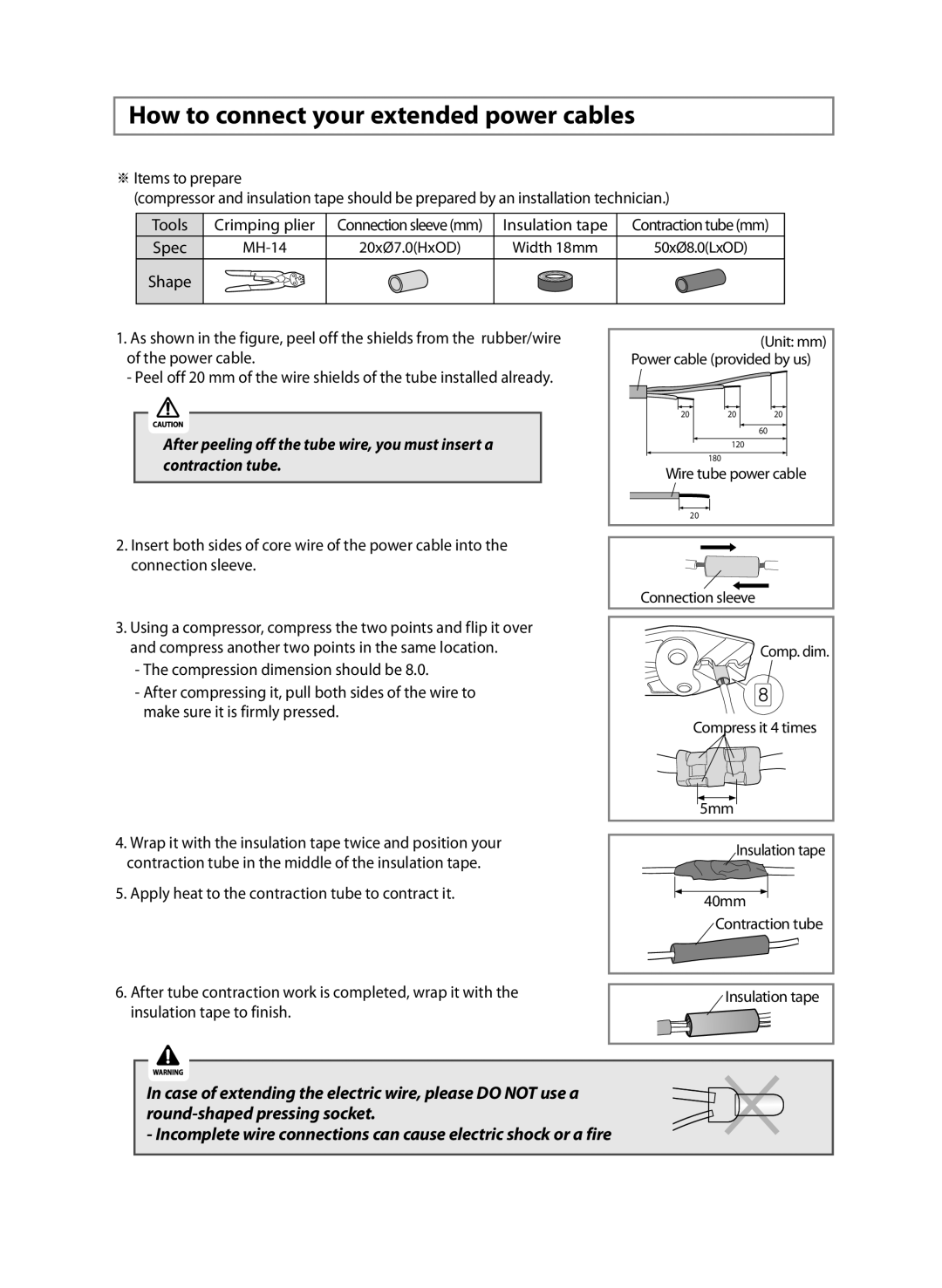AP50Q0CNAFR, AP55Q2DNUMG specifications
The Samsung AP55Q2DNUMG and AP50Q0CNAFR are two advanced air conditioning units known for their innovative technology and user-friendly features. These models are designed to provide efficient cooling and heating solutions for residential and commercial spaces.The AP55Q2DNUMG is equipped with a powerful inverter compressor, which enhances energy efficiency by adjusting the motor speed to maintain the desired temperature without frequent on-off cycles. This not only contributes to lower energy bills but also reduces wear and tear on the system, extending its lifespan. Additionally, this model is designed with a capacity suitable for medium to large spaces, making it ideal for living rooms, offices, and even small commercial areas.
Another notable feature of the AP55Q2DNUMG is its advanced filtration system, which includes a multi-layer filter designed to capture dust, allergens, and other particulate matter, ensuring that the air quality remains high. The unit also features a self-cleaning function, which helps keep the evaporator coils free from mold and mildew, further enhancing indoor air quality.
On the other hand, the Samsung AP50Q0CNAFR is designed for smaller spaces while maintaining a high level of performance and efficiency. This model also features an inverter compressor, enabling consistent temperature regulation with minimal energy consumption. The compact design of the AP50Q0CNAFR makes it a perfect fit for bedrooms, small offices, or any limited space where cooling is necessary.
Both models come equipped with Samsung's Smart Control technology, allowing users to manage their air conditioning remotely via a smartphone app. This feature provides convenience as well as flexibility, enabling users to adjust settings or set timers from anywhere, ensuring their environment is comfortable upon arrival.
In terms of energy star ratings, both models exemplify Samsung’s commitment to sustainability and energy savings. They utilize R32 refrigerant, which has a lower environmental impact and enhances energy efficiency. The sleek design of both units fits seamlessly into any decor, providing not just comfort but also aesthetic appeal.
In conclusion, the Samsung AP55Q2DNUMG and AP50Q0CNAFR represent two outstanding choices in the HVAC market, combining advanced technology, energy efficiency, and innovative features to enhance user experience while ensuring optimal climate control.

